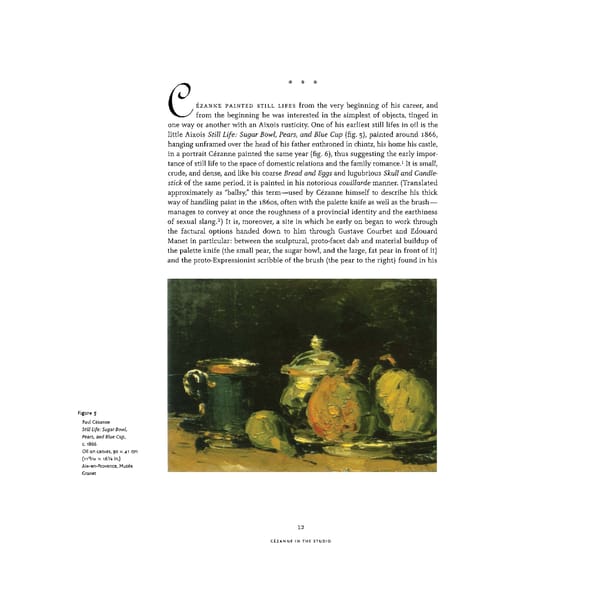EZANNE PAINTED STILL LiFES from the very beginning of his career, and Cfrom the beginning he was interested in the simplest of objects, tinged in one way or another with an Aixois rusticity. One of his earliest still lifes in oil is the little Aixois Still Life: Sugar Bowl, Pears, and Blue Cup (fig. 5), painted around 1866, hanging unframed over the head of his father enthroned in chintz, his home his castle, in a portrait Cezanne painted the same year (fig. 6), thus suggesting the early impor- 1 tance of still life to the space of domestic relations and the family romance. It is small, crude, and dense, and like his coarse Bread and Eggs and lugubrious Skull and Candle- stick of the same period, it is painted in his notorious couillarde manner. (Translated approximately as "ballsy," this term—used by Cezanne himself to describe his thick way of handling paint in the i86os, often with the palette knife as well as the brush— manages to convey at once the roughness of a provincial identity and the earthiness of sexual slang.2) It is, moreover, a site in which he early on began to work through the factural options handed down to him through Gustave Courbet and Edouard Manet in particular: between the sculptural, proto-facet dab and material buildup of the palette knife (the small pear, the sugar bowl, and the large, fat pear in front of it) and the proto-Expressionist scribble of the brush (the pear to the right) found in his Figure 5 Paul Cezanne Still Life: Sugar Bowl, Pears, and Blue Cup, c. 1866 Oil on canvas, 30 x 41 cm (ii13/i6 x i6Vain.) Aix-en-Provence, Musee Granet 12 CEZANNE IN THE STUDIO
 Cézanne in the Studio: Still Life in Watercolors Page 26 Page 28
Cézanne in the Studio: Still Life in Watercolors Page 26 Page 28